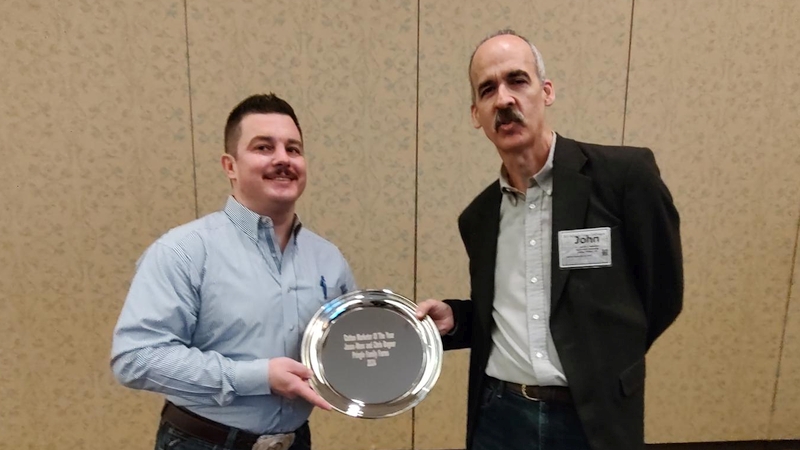Cotton Leaders Highlight Dire Industry Economics to House Subcommittee
Cotton industry leaders told a House Agriculture Committee hearing that assistance from Congress and the Administration is crucial for U.S. cotton to weather the current economic and regulatory climate.
In the “stress in cotton country” hearing conducted by the Committee’s General Farm Commodities and Risk Management Subcommittee, the witnesses outlined numerous market, policy and regulatory issues that threaten to undermine the U.S. cotton industry’s health.
The hearing panel was comprised of National Cotton Council (NCC) Vice Chairman Shane Stephens, a Greenwood, MS, warehouser; Mike Wright, a Lubbock, TX, banker; and a group of four cotton producers – Nathan Reed, Arkansas state chairman, American Cotton Producers, Marianna, AR; Shawn Holladay, a NCC director from Lubbock, TX; Kent Wannamaker, president, Southern Cotton Growers, Saint Matthews, SC; and Cannon Michael, a NCC director from Los Banos, CA.
Stephens stressed that a thriving cotton industry is critical to the success of many local economies.
“With the lowest U.S. cotton acreage in more than 30 years, the smallest exports in 15 years, and cotton prices at their lowest level since the 2009 recession, economic pressure is mounting,” Stephens said. Cotton demand, 10% below the peak observed in 2006, is struggling due to increased competition from synthetic fibers, and government support for international cotton production is increasing.”
Each of the producer panelists testified to the need for the Agriculture Secretary to designate cottonseed as an “other oilseed,” making it eligible for the Agricultural Risk Coverage and Price Loss Coverage programs. They stated providing a safety net for cottonseed “is desperately needed to provide stability in the cotton industry.”
Wannamaker’s testimony noted that for producers of multiple crops, the implications of the unified payment limit will be particularly harmful, as a portion or all of a producers’ payment limit could be used for marketing loan benefits as the crop is marketed throughout the year. He urged that USDA be able to operate the marketing loan program as it did prior to the 2008 farm bill, beginning with the 2015 crop.
As part of his testimony, Arkansas producer Reed said production costs have continually risen over the past decade, and that he feared the Mid-South region is at a tipping point with regard to cotton acreage and the remaining infrastructure.
“If some stabilizing policy is not implemented very soon, cotton acres are likely to continue their decline to the point that what is left of our infrastructure cannot survive,” Reed stated.
Regarding farm bill implementation, Reed said a significant concern is USDA’s rulemaking to determine whether an individual is “actively engaged” in a farming operation and eligible to participate in farm programs. He urged the Subcommittee “to work closely with USDA to ensure any changes to ‘actively engaged’ provisions adhere to the intent of the farm bill.”
Holladay, as part of his testimony, pointed to another critical concern to profitable production — availability of crop protection products and biotech traits. He also noted that Texas operations also are experiencing cash flow problems and have been undermined by high input costs.
“Successive droughts in Texas, while well documented, are only part of the story,” Holladay said. “Even beyond the severest drought years, yields have continued to be extremely low at a time when cotton prices have declined. As a result, farmers in our part of the country were totally bled out of liquidity by the end of last year. A great many struggled to get approved for financing for this year, with many forced to sell off land, and still others forced to quit.”
The West Texas producer also stressed the importance of a sound federal crop insurance program as a critical risk management tool. “However, it is important to understand that crop insurance benefits are not profit,” Holladay stated.
Much of Michael’s testimony focused on water management. The California producer stressed that more surface and groundwater storage “remains a critical piece of the solution to water shortfalls. Congress should streamline regulatory hurdles to assist in developing new environmentally sensitive water storage projects and other necessary water infrastructure improvements.”
Wright, executive vice president, Agricultural Lending for City Bank in Lubbock, told the Subcommittee that the projection of continued declines in market revenue, coupled with elevated production costs, are causing serious concerns among the lending community.
“The margins in agricultural production have been getting tighter every year due to higher production costs and lower commodity prices,” Wright stated. “Producers need above average yields just to break even. There is no doubt that some cotton farmers will not qualify for financing next year. We are concerned about our ability to continue to meet the lending needs of America’s cotton farmers in years to come.”
Source – National Cotton Council








